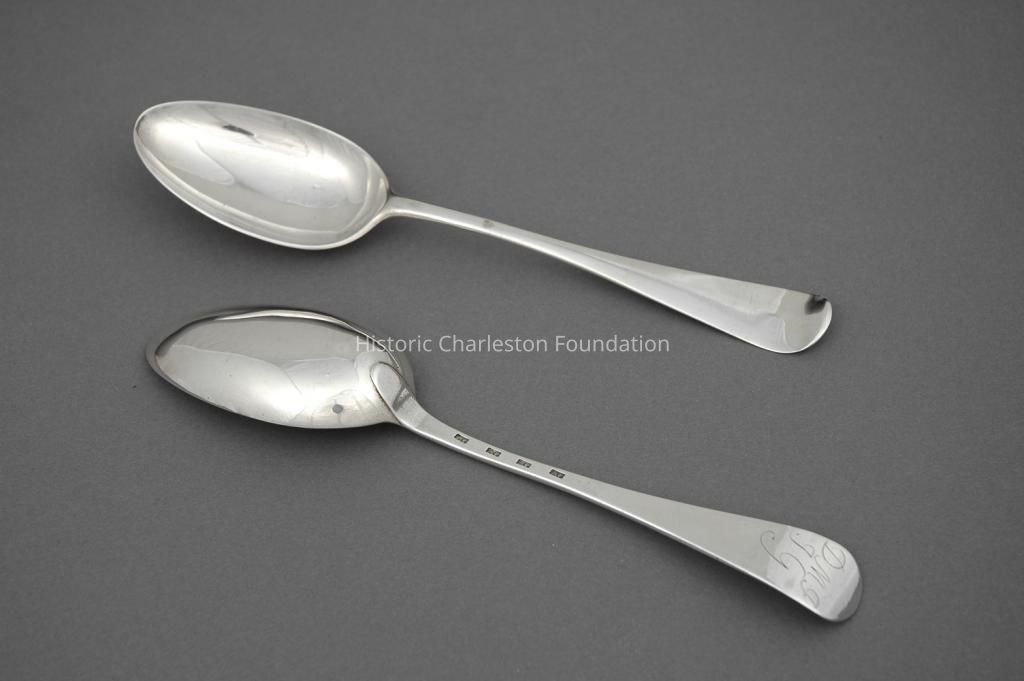Spoon
Name/Title
SpoonEntry/Object ID
2007.018.001-002Tags
Needs review, On LoanDescription
One of a pair of SpoonsCollection
Historic Charleston Foundation CollectionAcquisition
Accession
2007.018.Source or Donor
Wilkinson, Wynyard R. T.Acquisition Method
PurchasedMade/Created
Artist
Petrie, Alexander (Scottish-born, ca. 1717-1768)Date made
circa 1730 - circa 1768Place
City
CharlestonState/Province
South CarolinaCountry
United States of AmericaInscription/Signature/Marks
Type
Makers MarkLocation
back of handleTranscription
AP four timesType
EngravingLocation
back of handleTranscription
DMP over JGLexicon
Nomenclature 4.0
Nomenclature Primary Object Term
Spoon, EatingNomenclature Sub-Class
Eating & Drinking UtensilsNomenclature Class
Food Service T&ENomenclature Category
Category 04: Tools & Equipment for MaterialsOther Names and Numbers
Other Numbers
Number Type
NMAH Incoming Loan NumberOther Number
2016.6014Dimensions
Height
1 inWidth
1-3/4 inLength
8-1/4 inMaterial
SilverLocation
Location
Room
303Building
Nathaniel Russell HouseCategory
PermanentDate
February 7, 2023Location
Building
LoanMoved By
Lauren NorthupDate
January 6, 2017Notes
Smithsonian- National Museum of American History for the Many Voices, One Nation exhibitCondition
Overall Condition
GoodExhibitions
10
16

